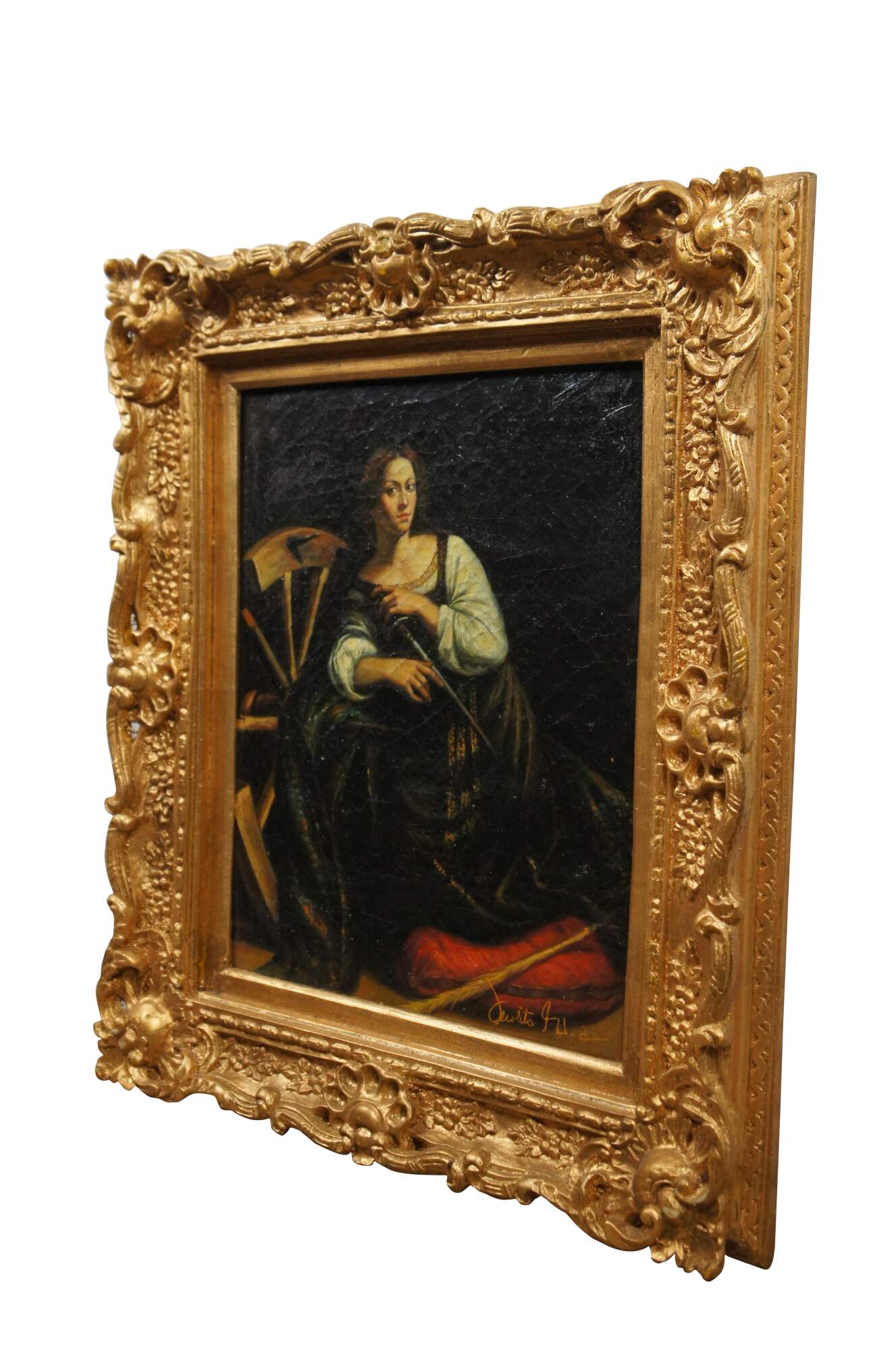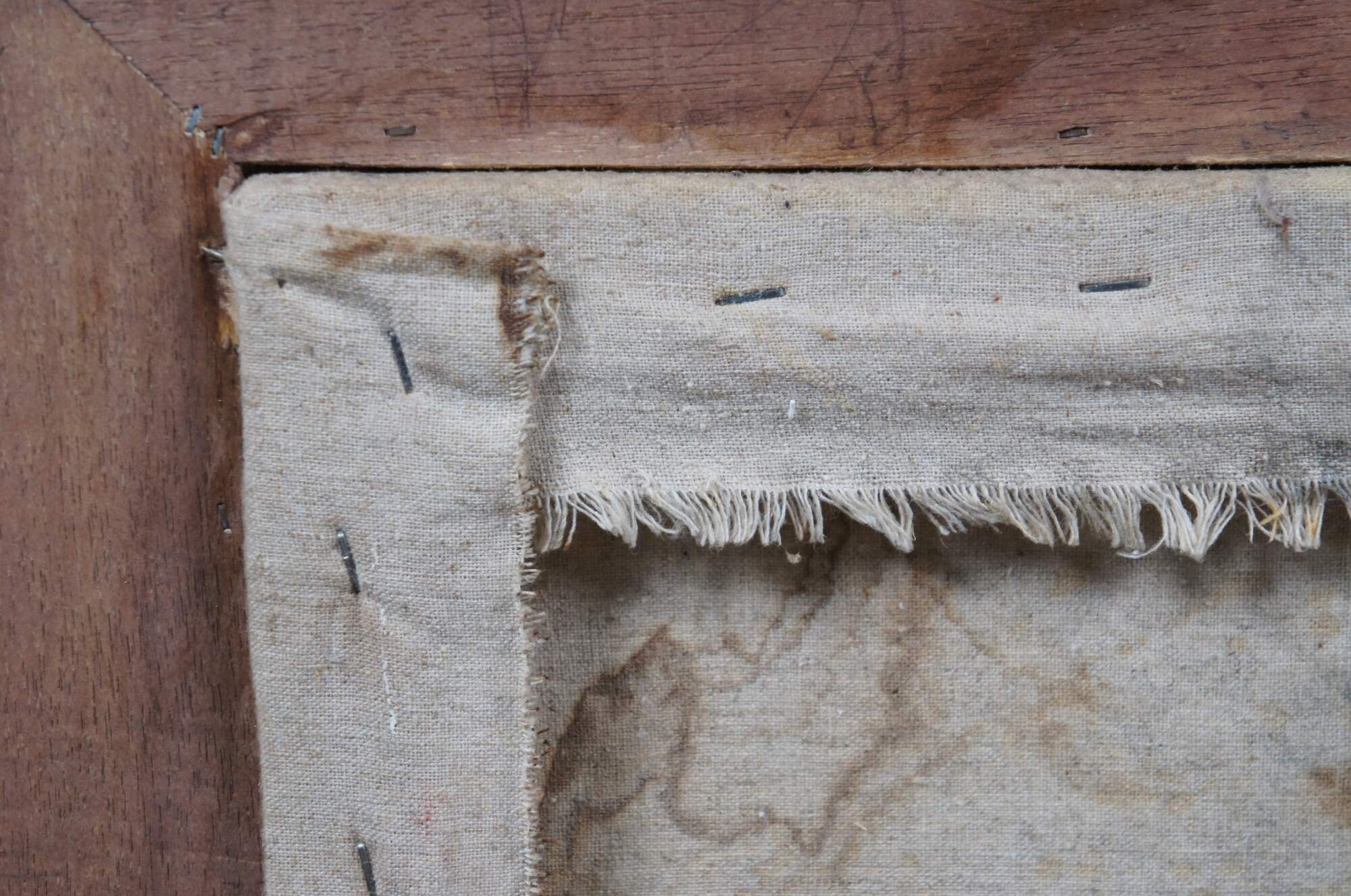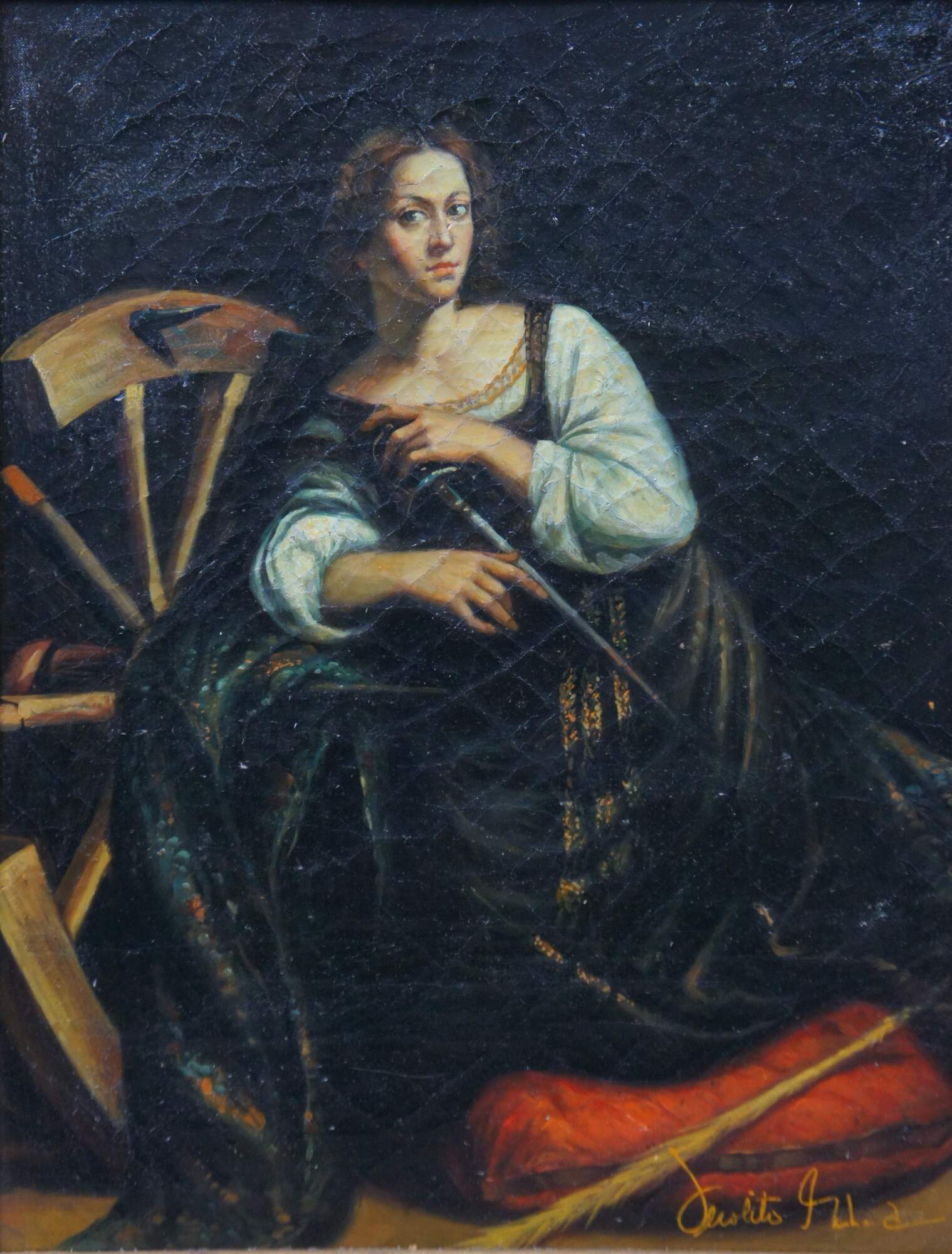
Saint Catherine of Alexandria Portrait Oil Painting After Caravaggio 28"
Sold
Shipping:
Free Shipping Included
Delivery:
Estimated 2-15 Business Days
Payments:
Credit Card, Check, Cash, PayPal, Apple Pay, Venmo
Returns:
30 Days 100% Money Back Guarantee, Buyer Pays Return Shipping
Description
Late 20th century oil painting on linen after a circa 1598-99 portrait of "Saint Catherine of Alexandria" by Caravaggio. Depicts Saint Catherine kneeling on a red cushion by the wheel used to kill her, holding a sword. High relief floral / foliate molded resin frame with gold finish.
"This painting was almost certainly commissioned in Rome by Caravaggio’s first patron, Cardinal Francesco Maria del Monte. Captured in a strikingly natural pose, the figure of St Catherine has been identified as Fillide Melandroni, a celebrated courtesan of the time. Richly dressed in robes befitting a princess, and kneeling on a cushion, she gazes out at the viewer surrounded by the attributes of her martyrdom: the breaking-wheel, the sword with which she was beheaded and the martyr’s palm. The dramatic lighting of the scene creates a chiaroscuro effect characteristic of Caravaggio, whose approach to light and volume—evident in this canvas—was to have considerable impact both in Italy and throughout Europe." (Source: Thyssen-Bornemisza Museo Nacional)
"Michelangelo Merisi da Caravaggio was born on September 28, 1573 in the town of Caravaggio, near Milan. He was trained in a Lombard tradition long grown stale. On the death of his father, a steward and perhaps architect for a local nobleman, he was apprenticed for a period of four years to Simone Paterzano, a mediocre Milanese painter who had studied with Titian. He left Milan for Rome around 1592. In the 1590s, when Caravaggio first settled in Rome, art had descended into glassy, learned vacuity. Painters were still traumatized by the memory of Michelangelo, a figure of such bulk that there seemed no way past him. As a young artist in Rome, Caravaggio was too poor to hire a model, but wore expensive velvet finery till it hung from him in rags. He was not a very educated man and was impatient with the intellectual offerings of the Papal Court. He fought with everybody, and was once sued for throwing a plate of hot artichokes in a waiter's face. He was probably a homosexual. He advanced the art of painting in that he painted the truth at a time when realism was not much in fashion. He painted directly from the subject; there are no known drawings by him. What troubled his contemporaries most was his chief pictorial invention - the dramatic light and darkness that flooded his canvases. His best paintings rely absolutely on tension between commonplace details and sublime staging. Like many self-destructive artists, Caravaggio managed to keep his life and his work in two separate compartments. Despite his irregular habits, he finished his commissions promptly in an age when procrastination was the norm. In the course of a short, fiery and often pitiable career, Caravaggio changed the face of 17th century European art. No Italian painter less resembled the Renaissance idea of the gentleman genius than Caravaggio. He was in some ways the first bohemian artist. Defamation, rent arrears, carrying an unlicensed sword, the lawsuits piled up until in 1606 Caravaggio murdered a man by knifing him in the groin over a game of tennis and was banished from Rome. He spent the next four years in flight and intermittent patronage, as he blundered in and out of scrapes in Naples, Malta and Sicily, executing masterpieces on the run. He was thirty-six years old when he died of malaria on July 18, 1610 in the fishing village of Porto Ercole, while trying to sneak back into Rome. His public career, with its entire ruinous vicissitudes, lasted less than twenty years" (Source: askART)
Condition
Good Overall - Gentle wear; crazing to surface
Dimensions
24" x 2.5" x 27.5" / Sans Frame - 15" x 19" (Width x Depth x Height)








